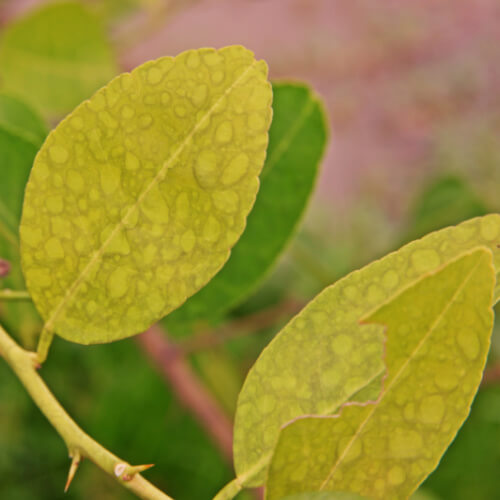Garden Trivia
◊ Why did the cleaning crew take the evergreen into work?
Find the answer below.
The Strength of Iron
Iron is a very versatile mineral. Our bodies need it. I take an iron supplement every day. People my age probably remember the commercials for Geritol for iron-poor blood.
Likewise, iron has an important role in the plant world. Depending on its intended purpose and the amount used; iron can be very beneficial or quite detrimental. Let me explain the “good” and the “bad” uses for iron.
Chlorosis, or the yellowing of plant leaves, is often a sign of a lack of iron. Applying a liquid iron like Bonide’s Liquid Iron will help = “GOOD”, Iron granules (Bonide’s MossMax) can be applied to moss to kill it = “BAD” for the moss.
If you want a greener lawn without excess growth; iron like Pennington’s Ironite will do the job almost overnite = “GOOD”. Iron phosphate is the organic slug killer in Bonide’s Slug Magic = “BAD” for the slugs. Iron in the form of FeHEDTA is an organic weed control for those who want to avoid synthetic (chemical) options = “BAD” for weeds. FeHEDTA is a chelated form of iron. Chelation is a method of concentrating the iron to make it strong enough for its intended purpose. Bonide’s Captain Jack’s Lawn Weed Brew is FeHEDTA.
Also, most quality fertilizers will contain iron as an added nutrient = “GOOD”.
As you can see, iron as a huge role to play in our every day lives. However, it must be used as intended and in most cases in moderation or else you could be called an IronPig.
Trivia Answer: They were told to “spruce” up the place.
Chlorosis – the yellowing of leaves – signs of iron deficiency




